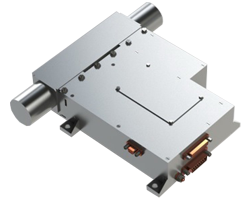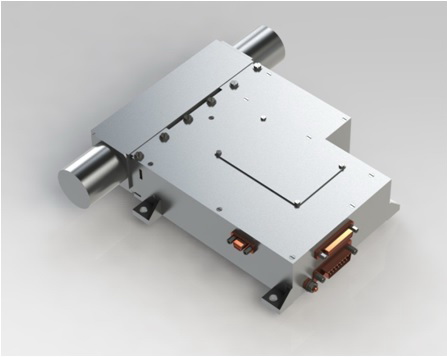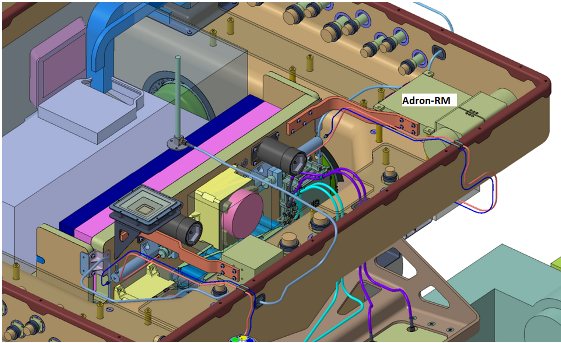ADRON-RM Neutron Detector for ExoMars Project
-------------------------------------------------------------------------------------------------------------------------------------------------
-------------------------------------------------------------------------------------------------------------------------------------------------

ExoMars is a joint project of Mars exploration implemented under bilateral Agreement between European Space Agency (ESA) and Federal Space Agency (Roscosmos). Following the proposed launch in 2020, two landers shall be delivered to Mars: a rover, provided by ESA, and a landing platform with scientific payload, provided by Roscosmos.
ADRON-RM neutron detector will be included in the rover's scientific payload. The goal of the experiment is to analyze hydrogen content (hydrogen as bound water, water ice, or OH (H2O)-radicals) in the shallow layer of the Martian surface.
Neutron probing of Martian regolith was performed for the first time in the DAN experiment onboard the Mars Science Laboratory mission (NASA, Curiosity rover). According to DAN's last results, there is a strong correlation between the data obtained in the result of measuring cosmic neutrons and those, which are received with the help of neutron generator onboard the rover.
The ADRON-RM neutron detector consists of two 3He proportional counters. One of them is protected with a cadmium shielding to exclude low-energy neutron fluxes. Simultaneous measurements of neutron fluxes in thermal and epithermal ranges give enough data to estimate the structure of the upper layer of the surface along the rover's traverse. Data on hydrogen compound in various sites along the traverse are crucial to estimate average water ratio (per cent) at the mission's landing site. Another important task is to choose optimal site for drilling, which is to be done together with other instruments onboard.
The Mars rover ExoMars-2020 is a six-wheel rover that will weigh about 300 kg. The rover has onboard a 70-cm drill, which allows to work with various types of soil, as well as three expandable rods, each of which allows to increase the drilling depth by about 50 cm. Using all three expandable rods, the drill can get rock samples from a depth of up to 2 meters.
ADRON-RM has a single-module design. Its configuration is similar to the one used in DAN-DE module (DAN experiment). As in DAN-DE, ADRON-RM uses industrial proportional counters filled with 3He. The instrument measures 16-channel spectra of thermal and epithermal neutrons in energy range 0.001 eV–100 keV.
The instrument will be installed inside the rover. ADRON-RM unit will have simple mount with 4 feet. The instrument will be linked by a special thermal strap with the spacecraft's science deck, which allows to avoid overcooling. Another feature is special heat-insulating stand-offs to minimize external thermal effects. Working temperature of the instrument's feet (-45 to +60 degrees Celsius) will be maintained by spacecraft systems. Electrical and data interfaces are developed according to the project's requirements.
A more detailed description of the design and operating principles of the instrument can be found in the article: The ADRON-RM Instrument Onboard the ExoMars Rover

Fig.1. ADRON-RM. General view

Fig.2. ADRON-RM mount onboard the rover
| Mass : | ~1.7 kg |
| Power consumption : | 5 W |
| Dimensions : | 210 x 48 x 216 mm |
Funding organization — Federal Space Agency of the Russian Federation.
Primary contractor — Space Research Institute of the Russian Academy of Sciences (IKI RAS).
ADRON-RM Principal Investigator — Dr. Igor Mitrofanov.
Works on ADRON-RM project are led under the State contract №025-8120/13/446 as of December 23, 2013.
Works on the ADRON-RM project are planned for 2013–2016 (development, tests, assembling, and instrument delivery; carried out after 2015 and run within the Federal Space Program-2025) and for 2016–2022 (operation and data processing).
| A.A. Blagonravov Institute for Engineering Science of the Russian Academy of Sciences (IMASH, Moscow) |
Design verification and mechanical testing. |
| Joint Institute for Nuclear Research (Dubna, Moscow district) |
Physical calibrations. |



